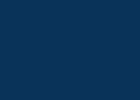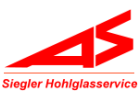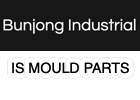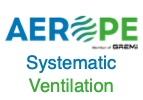Grenzebach has been a partner of the glass industry in India for decades, has continuously expanded its network and supports the solar power boom with innovative production technology for drawing glass.
India's economy has provided strong growth impulses in the last years. In the long term, experts expect a growth corridor of between four and eight percent for the economy. Almost 1.4 billion people live in India – the country with the second-largest population after China. The country, which stretches from the Indian Ocean to the Himalayas, is increasingly striving for economic independence from neighboring states and has also set ambitious climate targets. Images of New Delhi smothered by smog shall be a thing of the past. Solar power instead of coal-fired power is the motto. With its "Incredible India" campaign, the subcontinent has been showcasing its diversity for several years now. The economic and ecological upswing is being intensively promoted by the Indian government. While around 75 percent of the solar panels installed in India have so far been supplied by China, the domestically produced amount of solar panels is supposed to rise rapidly. The Indian government has added PV modules and battery storages for solar power to the list of the Production-Linked Incentive Scheme (PLI).
High demand for drawing and float glass
"At the moment, we are seeing an increased demand for drawing glass lines because the patterned glass is used in PV modules. The production of float glass will also increase further in order to supply the automotive and construction industries with glass products, for example," says Jan Lukassek, Senior Sales Manager in the Business Unit Glass at Grenzebach. Since 2005, he has been in regular contact with Indian partners and customers, advises them regarding the design of glass manufacturing plants and supports the customers with his expertise through all communication channels until the start of production and beyond. "So far, compared to the country's population and growing economic strength, there are relatively few glass manufacturing plants in India. I reckon that around 70 percent of the current capacity and the now growing capacity will be used for products for the Indian market. The rest will be exported." To support producers in India in setting up and expanding their production technology, Grenzebach can rely on decades of experience in the industry and their presence on the Indian subcontinent for a quarter of a century.
Already in 1996, Grenzebach built the first plant in India
Grenzebach took its first step into India in 1996 with the installation of stacking systems at the cold end of an existing float glass line. In 2006, ten years after Grenzebach's premiere in India, the company, with its headquarters in Bavaria, opened its own subsidiary in Poona, around 90 kilometers from Mumbai. From there, Grenzebach employees maintain plants throughout India and also neighboring countries. "The glass industry in India and in our neighboring countries has gained great momentum since the Grenzebach team started a quarter of a century ago. Solving day-to-day issues together with our customers and also strategically supporting the companies is a great pleasure," says Prasanna Hedge, Managing Director at Grenzebach Machinery (India) Pvt. Ltd in Poona. When talking about momentum: In 2009, the drawing glass line premiere in India took place together with Borosil Glass Works Ltd., in 2019, the second line was commissioned and in 2022, another two drawing glass lines for patterned glass will be installed for the newly founded company Borosil Renewables Ltd. Today, a total of six float glass lines from Grenzebach are in operation in India, with a daily capacity of almost 3,800 tons. With the two new plants at Borosil, four drawing glass lines will then produce up to 1,000 tons of patterned glass per day.
Further fine-tuning the technology for drawing glass production
Improving the quality of air and thereby the quality of life for the people living in India's 28 federal states, protecting the environment, making a significant contribution to the international efforts for climate protection: In order to reduce CO2 emissions and drive the energy transition forwards, the government is relying in particular on the power of the sun. Grenzebach is well prepared for the additional installation of drawing glass lines which are specifically designed for the production of glass for photovoltaic modules. To meet the increasing demand for solar glass, which is currently also centered in China, the Grenzebach experts comprehensively revised the portfolio for drawing glass and added new technologies, a state-of-the-art product line. Why drawing glass? Photovoltaic applications require ultra-clear glass with high light transmission, a light-focusing structure and low light reflection. Drawing glass, also called patterned glass, meets these requirements.
Borosil: Dedicated and flexible during the energy transition
Borosil realized the great demand for solar modules as early as 2009 and put the first drawing glass line into operation with a daily output of 180 tons per day. Another drawing glass line, commissioned in 2019, generates additional 240 tons per day. Borosil continues to expand to meet the increasing demand for drawing glass for PV modules as a result of the international energy transition. In 2022, another two patterned glass lines will be installed, each with a daily output of 275 tons. They will be located in Bharuch in the federal state Gujarat. The port city, with a population of around 170,000, is located in the western of India at the estuary of the Narmada River in the Gulf of Khambhat. Bharuch is a trading town rich in tradition and history and is mentioned in the most famous Indian epic, the Mahabharata.
From history to Borosil's investment in two state-of-the-art drawing glass lines. Borosil Renewables Ltd., part of the international Borosil Group, doubles its capacity in India for patterned glass for 5 gigawatts of photovoltaic modules daily with the expansion in Bharuch. The company now meets about 40 percent of the demand for drawing glass on the domestic market. The remainder is imported from China and Malaysia. "Investing in green power technology early on has proven to be the absolutely right strategy. We knew that drawing glass for solar modules would be of great importance on the Indian market. We will resolutely continue going on this path. The investment in the two additional drawing glass lines is an important step so that we can meet the increasing demand and in addition expand this strategically important business," says Ramaswami Velayudhanpillai from the Management of Borosil Renewable Ltd. The company is also heavily exporting. Borosil Renewables exports about 20 percent of the produced patterned glass to the USA and Europe, in particular to Germany, Spain, Portugal, Turkey and Russia.
Back to the new site of Borosil in Bharuch. Borosil places particular importance on enormous flexibility in production: Drawing glass for solar modules has a thickness of 1.6 to 4 millimeters. The formats of the glass sheets depend on the order but range within the frame of 1 on 2 meters. "In the area of photovoltaic, bigger glass formats are on the rise. Borosil anticipated that already and the line is designed to allow maximum gross widths. This promotes flexibility", says Jan Lukassek from Grenzebach. The maximum glass width is defined by the length of the structure roller. The two new lines have three robots each to stack the glass sheets at the line. Flexibility is also an important aspect of this: Two single sheets can be picked simultaneously (double pick) or individually (single pick).
The cold end is supplied by Grenzebach, the annealing lehr by CNUD EFCO GFT. Following the motto "from hot to cold", Borosil uses integrated solutions from a single source. Grenzebach and CNUD EFCO GFT have immense application knowledge with 300 systems installed worldwide. Both companies have been innovators in the field of technology in the industry since the 1990s. Together, they cover a large part of the subsections of a glass line and their customers benefit from their joint expertise in the hot and cold areas.
Borosil, with its additional expansion, is one of the drivers of India's growing importance in the global energy transition. India has potential and is likely to become an important hub for the enormous international demand for photovoltaic technology.
Although the Indian economy was hit by a slump as a result of the COVID-19 pandemic, and although India will have to struggle with the effects of the pandemic for a long time, the country could become one of the top three economies in the world by 2030. The boom in renewable energies and the boom in glass production are significantly contributing to this.

























